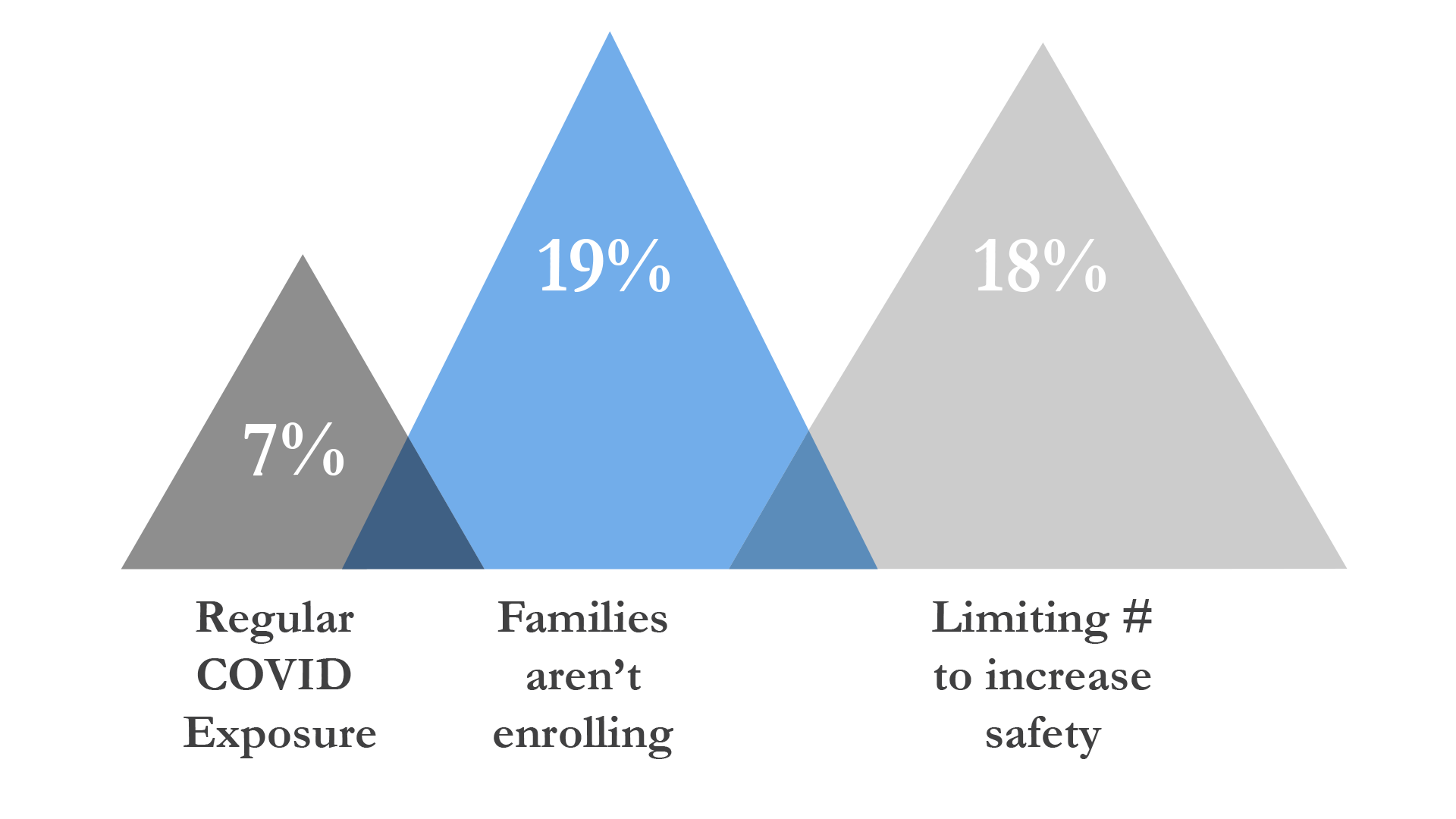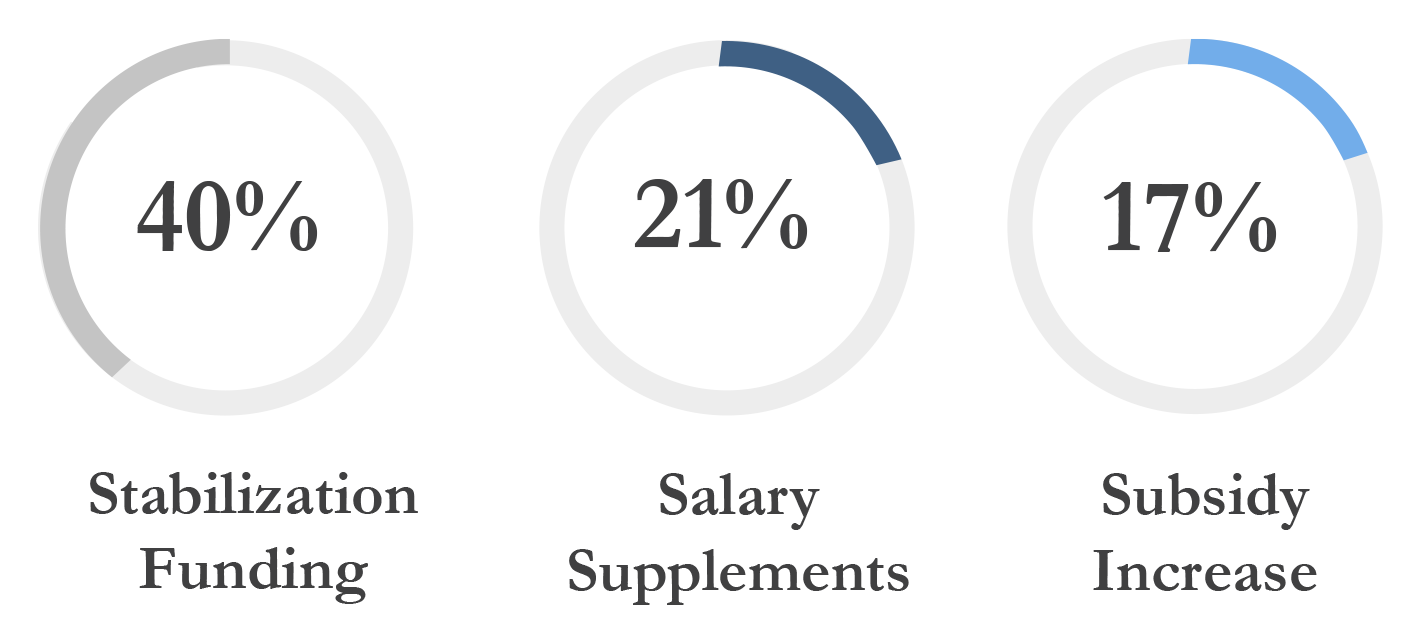Child Care Provider Update
The State of Child Care in the Kansas City Metro
The Pandemic Continues to Challenge Child Care Providers
The child care sector has serious, long-standing flaws. At the heart of the issue is the fact that most parents cannot afford care that adequately funds programs. Long before the pandemic, the financial burden placed on families was simply unworkable for many budgets. The average full-time monthly rate for center-based infant care in Johnson County, Kansas is $1,504.83. That’s almost double what most families spend on housing, and a serious problem for young families who are just getting started in their career, and have limited earning potential.
We’re all familiar with the high cost of care, but the overall cost is not actually the problem. In fact, the sector is significantly underfunded. Most programs operate on extremely thin profit margins and have long been leaning on the altruism of early educators – balancing budget and subsidizing parent rates by offering poverty-level wages and little to no benefits to their hardworking staff.
To learn more about where the money goes, and why quality early childhood programs cost so much, view this interactive cost of child care calculator.
The pandemic has amplified these issues to the point of collapse.
From January 13 to 21, we surveyed 173 child care owner/operators from across the metro.
Our key findings were:
- Child care centers are currently operating at 60% of desired capacity.
- In-home programs are currently operating at 79% of desired capacity.
- The pandemic has exacerbated long-term funding flaws.
- Providers are no longer willing to do this important and challenging work for low wages.
- COVID-relief funding can address these issues in the short-term, but long-term, significant investment is needed.
What is preventing child care center’s from reaching their desired capacity?

Percent of respondents who identified each challenge.
What is preventing child care center’s from reaching their desired capacity?

Percent of respondents who identified each challenge.
What do Child Care Providers Need?
Center-based Provider Needs:

Percent of respondents who identified each support.
In-home Provider Needs:

Percent of respondents who identified each support.
What can be done to support the child care sector?
From March 2020 to August 2021, 207 programs representing 5,080 child care slots permanently closed across the KC metro. While that is alarming, and a serious issue for an industry with longstanding supply issues, at the time, we were hopeful that as Federal funding began to reach providers, closures would slow and supply would normalize. It now appears that the pandemic may have been the breaking-point for many within the workforce. As other sectors compete for workers, and appear to be winning, the prospect of a quick rebound looks gloomy.
Child care budgets are tight and other industries are offering compensation that most programs can’t compete with. Without significant funding for the sector, like that proposed in the Build Back Better Act, the only solution for many providers will be to further raise rates, which already have many young families stretched far too thin.
As one provider put it, “My teachers are paid an hourly wage and our payscale starts at $12.00. It is hard to know that serving coffee at Starbucks makes more money than caring for children.” Further illustrating the challenge, A director of a large program reported that, “People are no longer willing to work for low wages, lack of benefits, unrealistic expectations, and “tough” customers.”
Sign up for our Advocacy Alerts to learn how you can support the sector.

